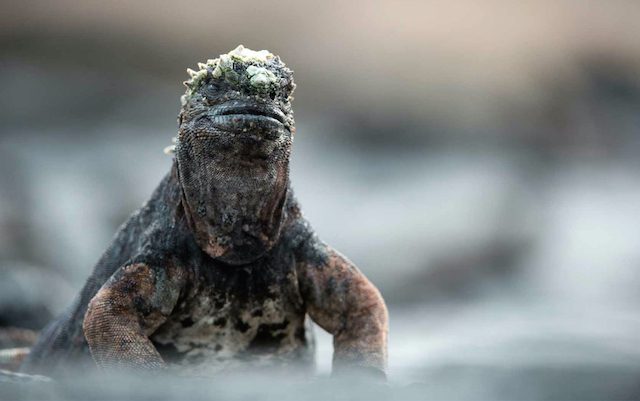
The Secret to Living Longer may be your Social Life
The Italian island of Sardinia has more than six times as many centenarians as the mainland and ten times as many as North America. Why? According to longevity researcher Susan Pinker, it’s not a sunny disposition or a low-fat, gluten-free diet that keeps the islanders alive so long — it’s their emphasis on close personal relationships and face-to-face interactions. Learn more about super longevity as Pinker explains what it takes to live to 100 and beyond.
Backup Plans: When a family caregiver dies before their patient
When Kristen Beatty lost her mother suddenly in 2012, her grief was complicated by another challenge: how to care for her 74-year-old father, who has Alzheimer’s disease. He’d been diagnosed 10 years earlier, and over the years her mother had become more than his caregiver: She was his gatekeeper, maintaining the privacy her retired Navy officer husband desired.
“We didn’t know where our mom kept any of the information that might help us in taking care of our dad. We honestly didn’t know how advanced the disease was and how paranoid and sleepless and restless he could be,” says Beatty, who lives in Centennial, CO. “All of those things were a revelation to us. Our mom had done such a good job managing it all.”
Beatty and her brother dug through filing cabinets in their parents’ home in Aurora, CO, and searched their mother’s cell phone contacts to come up with a list of their father’s doctors. They searched for a list of computer passwords so they could do things like cancel their parents’ vacation timeshare and see which bills were set to pay automatically. They had to find people who provided services like lawn care and snow removal. They had to hire paid help to come to their father’s home every day.
“We didn’t know where to go or what to do, and we were calling everyone and anyone for help,” Beatty recalls.
UNNATURAL ORDER
More than 65 million people—about 30 percent of the population—currently provide full- or part-time care for a friend or family member, according to 2009 figures from the National Alliance for Caregiving. But that number is inexact and could be much higher, says Lisa Winstel, chief operating officer of the Caregiver Action Network, a national nonprofit organization that provides resources for an estimated 90 million family caregivers. And as the nation ages, the number of caregivers will increase.
In the natural order of life, caregivers aren’t supposed to die before patients. From the outside, the relationships are viewed as one healthy person taking care of another person who is chronically ill, disabled, or aging. The focus is on the patient’s needs, which is why the sudden death of a caretaker can be so devastating for families and patients—even though it’s well known that many caregivers tend to neglect their own physical and mental health, sometimes fatally. In fact, spousal caregivers ages 69 to 96 have a 63 percent higher mortality rate than noncaregivers in the same age group, according to the Family Caregiver Alliance.
Dig deeper and the statistics are even more concerning, says Winstel. In a survey conducted by the Family Caregiver Alliance, more than one in 10 family caregivers reported that caregiving had caused their physical health to deteriorate. Almost 72 percent of family caregivers said they don’t see their own doctors as often as they should, and 55 percent said they skip their own medical appointments.
Still, many families are caught off guard when designated caregivers die. Because caregivers focus on the needs of others, they may not have created their own advance directive or living will. They may never have considered what would happen to their loved ones if they, the healthy ones, became incapacitated.
CAUGHT UNPREPARED
“We see families fall into disarray when tragedy strikes and a lot of things aren’t pre-planned,” says David Y. Hwang, MD, assistant professor of neurology in the division of neurocritical care and emergency neurology at the Yale School of Medicine in New Haven, CT. “Dad’s the one who knew all Mom’s medications, all Mom’s doctors, Mom’s medical history. Families basically take it for granted that Dad knew what Mom needed. It’s really tough for them to focus as they try to deal with the shock of what’s happened.”
THINK AHEAD
Doctors and advocacy organizations are now urging caregivers and their families to think ahead and put careful plans in place in advance of the worst-case scenario. Organizations like the National Caregivers Library and the Alzheimer’s Association offer online tools to guide caregivers through the legal, financial, and medical plans that need to be made.
“When I’m talking to a family and the spouse is the primary caretaker, I’ll say, ‘That’s great, but who’s the backup?’ That person needs to have power of attorney for legal or financial issues and be able to answer health care questions and make decisions,” says Ruth Drew, director of Family and Information Services for the Alzheimer’s Association’s national office in Chicago. “That person has to know where everything is: the will or the trust, the bank accounts, the insurance policies. You want to have these conversations when everyone’s fine.”
For added security, assign more than one family member as a backup, advises Maisha Robinson, MD, assistant professor of neurology at the Mayo Clinic in Jacksonville, FL. “List at least two family members or loved ones on the health care surrogate and living will forms,” she advises. If, for example, the spouse is the only person listed on the advance directive and the spouse dies before the patient, the next of kin will be legally responsible for making medical decisions, a determination that is made according to individual state statutes, Dr. Robinson explains. “It is far better for patients to designate alternate health care surrogates and decision-makers; this will significantly reduce confusion if and when medical decisions need to be made for patients.”
While families may have made informal emergency plans—a son will take care of his dad if the mom dies, a daughter will manage the affairs of her mother if the father dies—writing things down and shoring up support from all involved is crucial, Drew says.
She also recommends families consult a lawyer, ideally one specializing in elder care and planning. Some are taken by surprise when they learn the costs of nursing homes and care facilities. They may be equally surprised when they learn which costs are covered by insurance, if there is any, and what steps they need to take to receive government assistance.
“Even when everybody in the family has the best intentions, they don’t always agree on what the right thing to do is,” Drew says. “If one person has been given power of attorney and makes a decision others in the family don’t agree with, that can have major negative repercussions.”
BE PROACTIVE
After seeing some of his patients unsettled by the death of caregivers, Jason H. Karlawish, MD, professor of medicine in the geriatrics division at the University of Pennsylvania’s Perelman School of Medicine, decided to change the way he talks to patients. During an initial visit, he’ll find out if patients have authorized anyone to make decisions for them if they become incapacitated. Once he determines who the primary caretaker is, he’ll encourage families to make backup plans, especially if the caregiver is a spouse.
“I’ve seen patients thrown into unsettling family situations where the spouse dies and the adult children can’t agree on who is caregiver number one and number two,” he says. “After enough of those experiences, I’m more and more sensitive to it, and I’ve become proactive.”
Dr. Karlawish often finds that family members have different perceptions of a patient’s needs, sometimes because they have different levels of information about the patient’s illness. Why can’t she live alone? Why can’t she go to adult day care? “I hear how children fight over what to do,” he says. “Don’t wait for a problem [to make these plans].”
During conversations with patients, Dr. Karlawish will ask what they plan to do if their primary caregiver dies. Who will they turn to? Then he’ll suggest they contact that far-away sibling or close friend and ensure he or she is on the same page.
“As physicians, we’re not trained to think deeply about social structure and family beyond the immediate needs of the patients. But you have to think about that, especially with Alzheimer’s disease,” Dr. Karlawish says. “It’s about engaging and empowering families.”
SHARE THE LOAD
Some caregivers resist these conversations. Penelope D. Zeifert, PhD, clinical professor in neurology and neurological sciences at Stanford University School of Medicine in Palo Alto, CA, recently met with a patient in her eighties who has memory problems. The woman cares for her husband around the clock and told Dr. Zeifert that she didn’t want to go to great lengths to find the cause of her own problems.
“She was anxious and said, ‘No, I don’t want any feedback,’” Dr. Zeifert says. “She has a son, but I don’t think he has any clue that she’s having difficulty. People often try to protect their family members.”
Ann Emiko Igarashi Boylan, 66, has Parkinson’s disease. William, her husband of 39 years, is now in his 80s and has heart problems. Recently, Boylan has made a point to include their two adult sons in their health care journey. Currently, the California couple acts as caregivers to one another as needed, like when William had a heart valve replacement operation.
“We have to deal with the idea of aging in partnership,” says Boylan, who is also an advocate for the Parkinson’s Foundation, representing the New York–based nonprofit at events and educating others about the disease. “We have think in terms of what’s going to happen down the road.”
GET ORGANIZED
Boylan maintains a health journal for the two of them because “even if the dosage is on the bottle, it’s good to have it all in one place,” she says. They’ve also talked about selling their home and downsizing while still staying within a quick drive of their sons’ homes. Each has an advance directive and a living trust.
“These documents speed up treatment and describe the kind of care you’d like to receive if you get into a situation where you can’t communicate,” she says. “It can be as simple as ‘I want to be able to look out and see nature,’ or ‘I want people to visit me and talk or pray or play certain kinds of music.’ I don’t like to have an oxygen mask covering my full face, so I wrote that down, too.”
In many ways, Boylan says, she feels healthier now than she has in years. Her tremors seem to be under control, she exercises regularly, and she enjoys going out with friends and reading. She has taken advantage of her stable health to take care of those “just in case” details that she might otherwise have avoided.
“It involves asking questions, a lot of what ifs, but it’s not a negative thing. I stay calm and work through it,” she says.
MAKE A PLAN
Kristen Beatty and her brother managed to resume care for their father after their mother’s death because their parents kept their medical records in filing cabinets and had a small black book listing all of their passwords. While they still had to search for information, there were easily identifiable places to start.
Beatty’s father is now living in an assisted care facility. The siblings have a strong relationship and have roughly divided their father’s ongoing care. She handles the health side of things, while her brother manages the money, bills, and investments. “We also have plans in place for ourselves so that if something happens to us, we don’t leave our families in a bind,” she says.
Beatty’s advice for other families: Have an end-of-life plan that includes everything from thoughts on “Do not resuscitate” orders to preferred funeral songs. Not everyone has to know the details at all times, she adds.
“You don’t have to read it or know it all, but have it all documented so you can pass it on,” she says. “It could be a website. It could be a manila envelope with medical papers. Just let someone know where it is.”
5 Ways to Prepare for the Worst
1. Plan ahead whenever possible. Involve all members of the patient’s support network. Make sure that advance directives, living wills and last wills, and other important documents are completed and kept in a known location. Be open, honest, and realistic about end-of-life wishes and goals.
2. Review current and projected finances. Look at living costs and assets, including existing insurance, to see what changes might be necessary to ensure care.
3. Have a plan, then create a backup plan. Hope for the best but prepare for the worst. That means knowing what your family will do if the primary caregiver dies before the patient.
4. Make use of free services online. Life Happens (http://lifehappens.org) is a nonprofit organization that provides information on insurance-related topics. The Alzheimer’s Association also has a tool at http://bit.ly/Alz-EndOfLife that guides users through important end-of-life issues.
5. If possible, work with a professional. Seek out an attorney, insurance agent, financial advisor, or elder care professional to help with the planning. Legal aid is available for those who can’t afford the cost of a private attorney.
‘7 Years of Camera Shake’: photographer with PD publishes book
Last month, wildlife photographer David Plummer launched his coffee table book, ‘7 Years of Camera Shake’, in aid of Parkinson’s UK. Within its pages are more than 200 photos showcasing animals from around the world – all of which were taken after his Parkinson’s diagnosis. Here, in an extract from the book, David describes his journey as a professional photographer.
All art is a form of communication. As a child I obviously felt the need to communicate what I was seeing in the natural world. When I initially took up photography, it didn’t mean that much to me; I found it difficult to find inspiration – there seemed to be little art in wildlife photography. An image of a bird was invariably a black and white shot of a bird bringing food to a nest. From my mid-twenties onwards, I think my mind was mature enough to understand what I was dealing with, and it was the mix of this artistic element and photographic technique that wildlife photography requires that really grabbed me.
In the early years, I was not original. I looked at another wildlife photographer’s images and tried to copy or emulate them. In doing so, however, I was learning the craft; the formulaic elements that make up a good photograph – the background control, the depth of field, the composition. Once I had grasped those formulaic elements, and learnt and practised repeatedly, they eventually became a habit.


Atlantic puffin with sand eels, Skomer Island, UK
So, in essence I had a powerful tool at my disposal, one that allowed me to communicate my experience of the natural world. I wanted people to see and experience what I was seeing; I wanted them to become part of the woodland or marshes, to see the vivid mix of colours when a kingfisher lands in front of you. I strongly feel that this art is a form of impressionism; with one single image your role as a photographer is to move your viewer psychologically. Maybe nothing profound, but rather than them seeing just the woodland, they are instead a part of the woodland floor amongst the fungi – visualising themselves walking down one of its paths through a sea of bluebells, or sensing the power behind the glare of a jaguar. Instead of just seeing a photograph, they are feeling it.


Galapágos sealions play-fighting, Galapágos, Ecuador
The obsessions have become quite intense over the years; I would fixate on getting the perfect image of a great spotted woodpecker or kingfisher to the detriment of my career. Commercially, I would have been more successful if I’d done the ‘wildlife rounds’ gaining a wider portfolio of images, from more easily sought locations. But the elusive appealed to me; images people weren’t getting, such as owls, or ocelot.
I remember spending three days in the Amazon in a hide in super-hot, humid conditions, for 12 hours a day, from before dawn until after dusk, waiting for an ocelot to walk up a dry sandy streambed. I had seen the paw prints and I realised it was a habitual routeway. I was obsessed with capturing an image of this cat.


Spotted hyena with prey, Maasai Mara, Kenya
Each day on the way to and from the hide I would brush the sand clear of footprints so I had an idea of what had passed. On leaving at the end of my third unsuccessful day, I noticed that the ocelot prints had come up the riverbed to a point just before they come into view of the hide. Then they simply veered off to the side – this gorgeous and elusive predator had realised my presence, and had simply circled around me! I loved this cat all the more, but it took me a few more years to finally get images of this stunning cat.
Sometimes these obsessions can be difficult for people around me to understand, but I cannot help it, and I’ve learned to accept it. I think most people close to me now know that I’m invariably doing one bonkers thing or another to get a picture: in a marsh in chest waders at dawn, sitting in a hedge in full camouflage, following a jaguar on foot – which I really don’t recommend by the way.


Marine iguana, Galápagos, Ecuador
I like nothing more than a burgeoning new project. Solving the problems to not only get close to the subject, but capture a photograph of it – a perfect photograph. Maybe it’s that primal hunting instinct; but hunting without killing. Indeed, to produce an aesthetic image, capturing the essence of a creature, is undoubtedly much harder than killing it. And that pursuit of perfection, of capturing the essence, is a shifting thing as time goes by; what was perfect 10 years ago may no longer be the case now, so the quest goes on. The Holy Grail. Always push for better, for different.
This article is an edited version of the forward from David Plummer’s book ‘7 Years of Camera Shake’, and is published on ParkinsonsLife.eu with the kind permission of the author. Article from Parkinsonslife.eu.
A Practical Guide on Navigating the Workplace with Parkinson’s
The decision to share a Parkinson’s diagnosis at work is personal. Many individual factors contribute to if or when you’re ready to disclose this information. And once the conversation begins, recurring discussions may be necessary as symptoms change or the disease progresses.
In collaboration with Marti Fischer, a career and professional development consultant, the Michael J. Fox Foundation for Parkinson’s Research has developed a two-part guide to help navigate the ins and outs of talking about Parkinson’s at work. Part I, “Sharing Your Parkinson’s Diagnosis at Work,” provides practical tips and tools for crafting a personalized strategy to bring Parkinson’s into the workplace. “Talking about Parkinson’s at Work,” the recently released Part II, recommends strategies for continuing conversations, handling common reactions and situations, and managing long-term professional relationships.
Download Part I and Part II of the guide.
People with young-onset Parkinson’s — diagnosed at age 50 or earlier — may be more likely to be in the workforce when diagnosed. Register for the next Third Thursdays Webinar to learn more about the challenges and treatments of young-onset Parkinson’s disease.
Parkinson’s Tulip
You may have noticed that WPA uses an image of a tulip throughout our website and publications. Have you ever wondered why?
The tulip is the official symbol within the Parkinson’s community. In 1980, J.W.S. Van der Wereld, a Dutch horticulturalist who had Parkinson disease, developed a red and white tulip. Van der Wereld named his prized flower, the ‘Dr. James Parkinson’ tulip, to honor the English apothecary surgeon who originally described Parkinson’s in 1812.
You will see many variations, as PD organizations around the world use the tulip as a symbol of hope and optimism. The tulip unifies independent regional organizations like WPA, national organizations and their individual chapters, people with Parkinson’s and their family and friends, neurologists, research scientists, and more.
The tulip is a reminder that regardless of affiliation, we are one community working toward common goals: to help people with Parkinson’s live better longer, to discover better treatments, and to strive for a cure.
Recent Comments